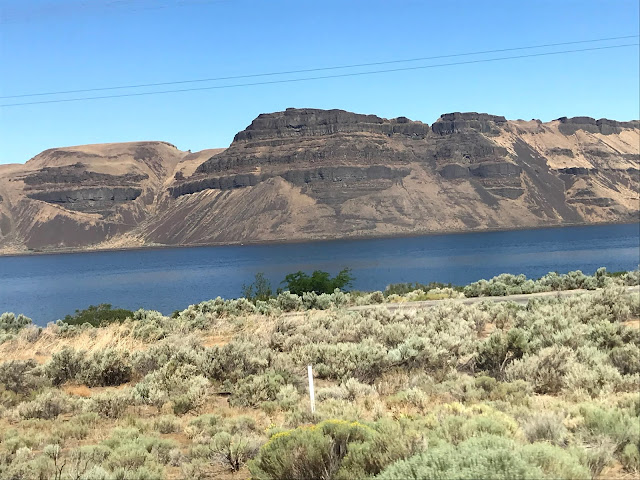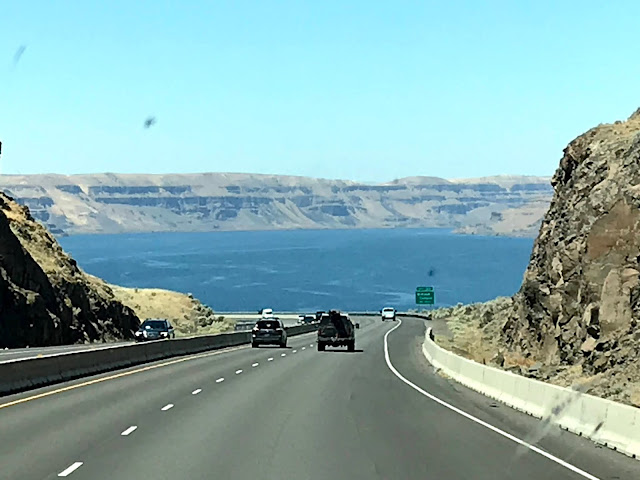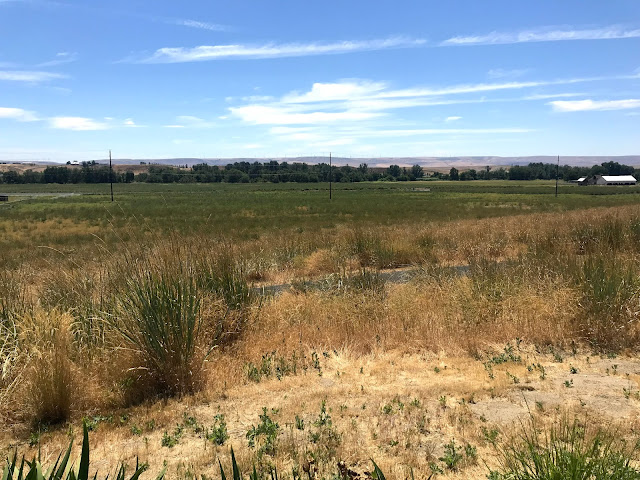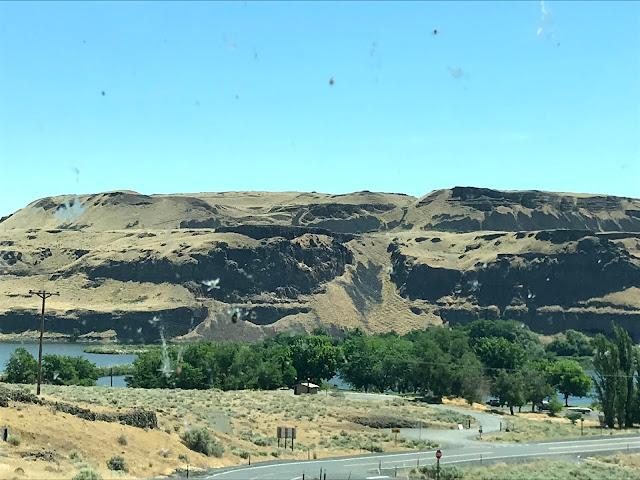The wifi at the Spokane Valley KOA was unusable. The best connection point was in the game room of the office building. Not very convenient! Our ATT cell signal was only one bar, so that was out. My last post was done late in the evening when usage was low, but yesterday just didn't happen as far as internet connection.
We did, however, have a chance to explore downtown Spokane. In 1974, Spokane was the venue for a Worlds Fair event. An island in the Spokane River was created, added to, and built on. Today, the US pavilion remains as an event center, but the rest of the island has been converted to parks, trails, water features, and statuary, and is known as Riverfront Park.
This is also the site of the Upper and Lower Falls of the Spokane River. The upper falls is the most spectacular, with roaring whitewater rapids!
The power company make good use of all the water to produce electric power.
The lower falls is calmer, but still incredible. A short diversion dam provides intake water for another hydroelectric plant.
A kind gentleman stopped to take a family photo. Thanks, Lowell!

A block south of Riverfront Park, we found welcome relief from the heat at Atticus. The midday temp was in the mid nineties, and walking around in the heat with all that water developed a glow! In Atticus we found iced tea with spearmint and a splash of mango! Gimme a large, please!
We also saw a sign that is both frightening and encouraging.

A quick stop at Fred Meyers grocery store and it was back to the cool interior of the motorhome. Sasha was glad to see us!
Today, Thursday, we left Spokane about 10 am, heading west on Interstate 90 toward Ritzville, where we turned south. That's where we made a significant error. Two routes can be taken: south on US395, a great, mostly divided highway that zips into Kennewick, where it was a hop and a jump to our destination. Or, south on WA261. This was a pretty good road until we got to a point just south of Washtucna, where it turned to...something other than good. The next 60+ miles were slow, 45 mph, steep, twisty miles. There were, however, some interesting sights along the way.
Leaving the pine trees around Spokane, we found ourselves in grazing country.
And roads that seemed to go on forever.
Then, a change began to occur. Fields of wheat stretched for miles.

We began to see the beginning of The Palouse. Huh?
The Palouse is one of the seven wonders of Washington State. The others are: Mt. Rainier, Mt. St Helens, The Columbia River Gorge, The Hoh Rain Forest and Long Beach on the Olympic Peninsula, and The Channeled Scablands, which are large swaths of barren bedrock and rocky land formations. Called Scablands by early settlers because they were not suitable for farming, they are called Channeled because they are crisscrossed by narrow channels cut into the bedrock, called Coulees. But I digress.
The last of the Seven Wonders is The Palouse. Formed from wind blown dust and silt blown over millennia. The dust was created by glaciers slowly grinding rock, to be left as the glaciers receded. Wind, rain, and time have carved the dust into rolling hills cut through with rivers. From the Steptoe mountains, a peek at the Palouse Scenic Byway:
The Snake River appeared near Perry, with it's signature railroad bridge.
Crossing the river was a challenge! The elderly....nay....old bridge has a sign on the approach warning of "Narrow Bridge". And it was.
But we made it, after holding up oncoming traffic for a bit.
And soon got into the depths of The Palouse. Millions of acres of wheat cover these rolling hills, causing us to wonder how the crops are planted and later harvested?

Those black spots are not UFO's, but bugs on the windshield!
So, after 172 miles of slow going, we pulled into Walla Walla, Washington, and the Blue Valley RV Park, Site number 26. Not a bad park, Easy in and easy out, with paved sites and patios. It's located in a sketchy part of town, but the surrounding walls provide a sense of security.The trees are still young, but somehow we were assigned the only site in the park where the satellite tv reception was blocked by a tree! I guess we'll have to actually talk to each other for a couple of days!

We heard about a Thursday night Farmer's Market a few miles down the road, so we had to check it out. Fifty dollars later, we had home-make tamales, peach and marionberry pie, Walla Walla sweet onions, cherrys and cheese! I would post pics of the pie, but.....(it was delicious1)









































































